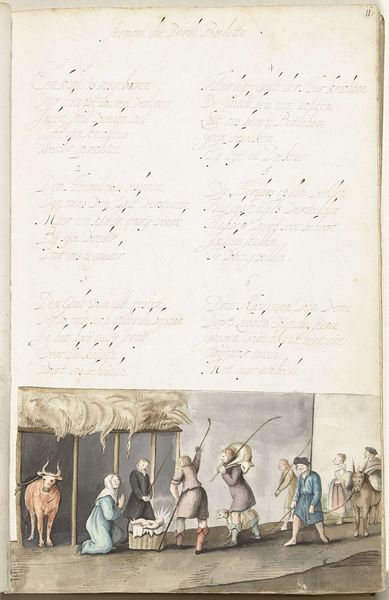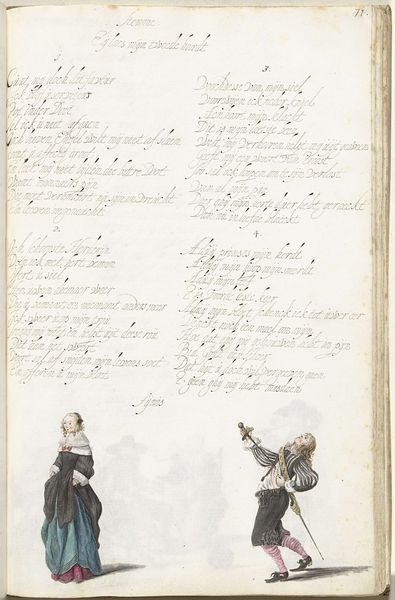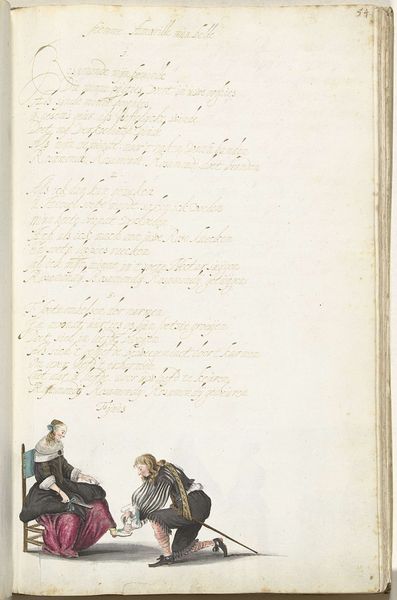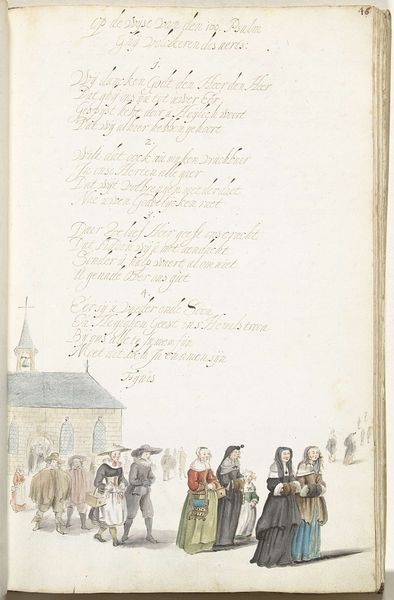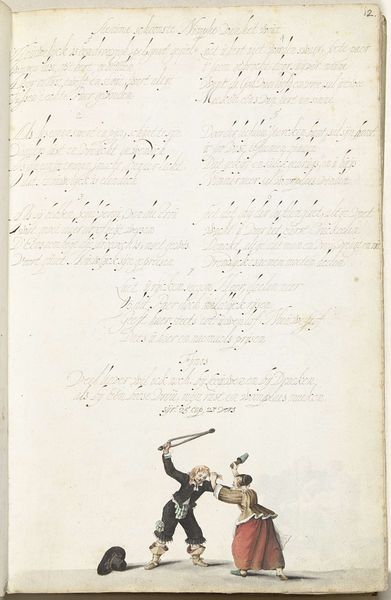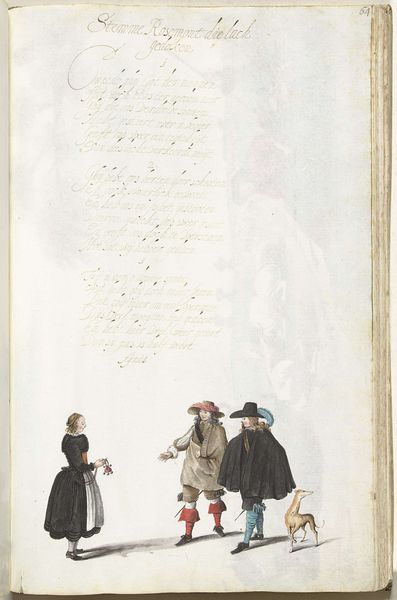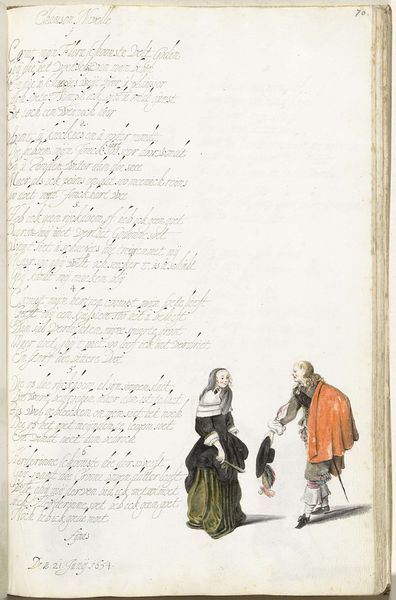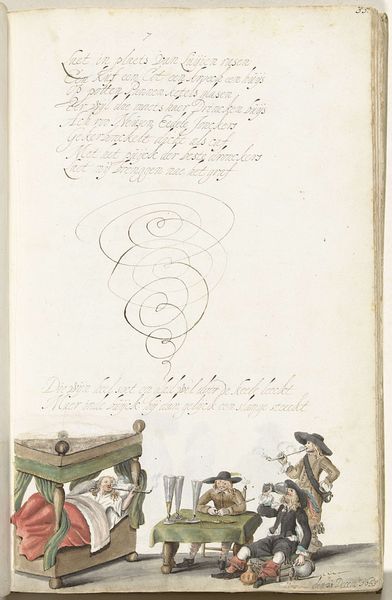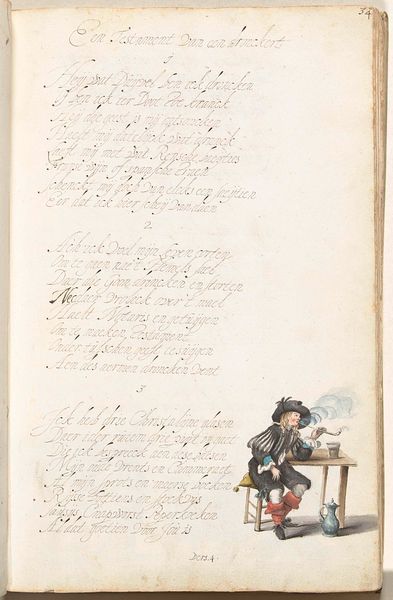
drawing, mixed-media, paper, ink, pen
#
portrait
#
drawing
#
mixed-media
#
dutch-golden-age
#
paper
#
ink
#
coloured pencil
#
pen
#
genre-painting
#
mixed media
Dimensions: height 313 mm, width 204 mm
Copyright: Rijks Museum: Open Domain
Curator: Looking at this intriguing tableau, "Company of Five Figures" by Gesina ter Borch, made around 1654-1658, reminds us of the vibrant social tapestries woven during the Dutch Golden Age. It's rendered using pen and colored pencil on paper. Editor: My immediate thought? There’s a relaxed atmosphere, almost theatrical. The composition, split between text and the figurative scene, gives me this dual sense of observation. Like overhearing whispers across time. Curator: That interplay you're sensing can be tied to the historical positioning of women artists like Ter Borch, navigating both societal expectations and creative expression. Dutch genre paintings often idealized domestic life; here, we see perhaps a glimpse beyond, reflecting a more nuanced understanding of the times. Editor: It feels deeply personal too, right? Ter Borch, probably drawing scenes from her life or imagined scenarios, has this amazing skill of capturing candid moments that burst with energy, despite the obvious formal constraints she may have faced being a woman at that time. It also kind of tells a narrative without giving away a moral. The faces feel expressive; that leaning-in couple over there seems to steal glances. It hints to relationships in society, and it doesn’t patronise them at all. Curator: Absolutely, and from a socio-historical lens, the very act of Ter Borch creating this type of art—likely intended for a personal album or friendship book, a distinctly upper-middle class pursuit—challenges established hierarchies of artistic value and authorship. In these drawings the artist can observe herself with greater acuity and self-determination, it might offer insight on questions surrounding identity. Editor: See that one character standing alone smoking a pipe and minding his own business on the right side, while a group shares tales on the left; maybe I am that man, maybe I am those folk sharing stories. You do wonder about those unseen details around the edges—a certain air to be found, those inky shadows of the self, a kind of hidden freedom there on display—for those with the eyes to see it, and for her the artistic bravery to document it! Curator: Ultimately, I think this piece invites us to think critically about not just the visual aesthetics of the Dutch Golden Age, but about the untold stories of artists, particularly women artists, whose voices and experiences deserve careful consideration. Editor: Yes, it makes us consider it's less a perfect picture, more of a perfectly posed question!
Comments
No comments
Be the first to comment and join the conversation on the ultimate creative platform.
